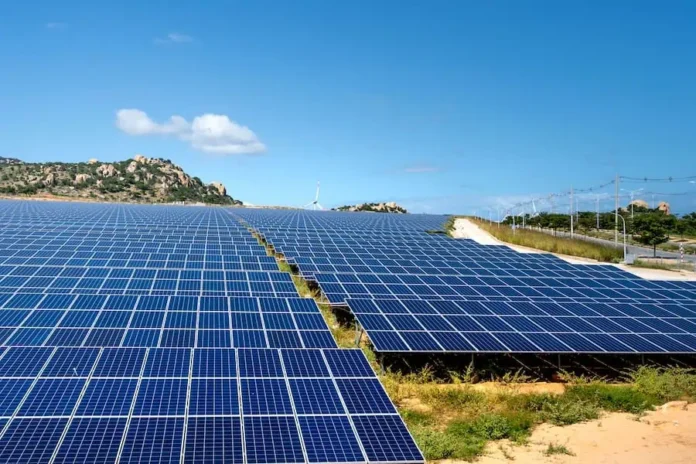In today’s fast-paced business world, understanding the various energy options available is crucial to making informed decisions and creating a sustainable future for your company. This comprehensive blog post will explore the different types of energy available to businesses, including renewable and non-renewable sources, their advantages and disadvantages, and how businesses can save money and reduce their environmental impact. Read More to discover the best energy option for your business
Introduction To Business Energy
Business energy refers to the electricity and gas used by companies to power their operations, from lighting and heating to running machinery and equipment. It’s essential for businesses to understand their energy consumption and explore the different options available to them in order to minimize costs, reduce their environmental footprint, and make informed decisions about their energy contracts.
Types Of Energy: Renewable Vs. Non-Renewable
Energy sources can be broadly categorized into two main types: renewable and non-renewable.
Renewable Energy
Renewable energy comes from natural resources that are replenished over time, such as sunlight, wind, and water. Some of the most common renewable energy sources include:
- Solar: Solar panels convert sunlight into electricity, offering a clean and sustainable energy source.
- Wind: Wind turbines harness the power of the wind to generate electricity.
- Hydropower: Energy generated from moving water, typically through dams or other water control systems.
- Biomass: Organic materials, such as wood, agricultural waste, and other plant-based materials, are burned to produce heat or electricity.
Advantages of Renewable Energy:
- Environmentally friendly, reducing greenhouse gas emissions and lowering your company’s carbon footprint
- Sustainable and abundant resources
- Can reduce long-term energy costs, as the cost of renewable technology decreases over time
Disadvantages of Renewable Energy:
- Initial installation costs can be higher than non-renewable options
- Some renewable sources, such as solar and wind, depend on weather conditions and may not provide a consistent energy supply
Non-Renewable Energy
Non-renewable energy sources come from finite resources that cannot be replenished, such as fossil fuels and nuclear power. Common non-renewable energy sources include:
- Coal: A fossil fuel that is burned to produce heat and electricity
- Natural Gas: A fossil fuel consisting primarily of methane, used for heating, cooking, and electricity generation
- Nuclear Power: Energy generated from the controlled splitting of atoms in a nuclear reactor
Advantages of Non-Renewable Energy:
- Often have lower initial installation costs
- Can provide a consistent and reliable energy supply
Disadvantages of Non-Renewable Energy:
- Contribute to greenhouse gas emissions and other forms of pollution
- Finite resources, leading to potential future scarcity and price fluctuations
Energy Needs Vary By Business Type, Size, And Industry
The energy needs of a business depend on various factors, including the type of business, its size, and the industry it operates in. For example, manufacturing facilities typically have higher energy requirements than small retail shops, while businesses in the technology sector may prioritize clean and sustainable energy sources to minimize their environmental impact.
It’s essential for business owners to assess their specific energy needs and explore the different options available to them to make the best decisions for their company.
Cost Of Various Energy Options
The cost of energy varies depending on the type of energy source, market conditions, and government policies. While renewable energy sources like solar and wind power have seen significant cost reductions in recent years, they may still have higher upfront installation costs compared to non-renewable options. However, the long-term cost savings from reduced energy bills and potential government incentives can offset these initial expenses.
When comparing energy options, it’s crucial to consider not only the immediate costs but also the long-term financial and environmental benefits.
Saving Money Through Conservation, Efficiency, And Smart Technology
There are several ways businesses can save money on their energy bills, including:
- Energy Conservation: Implementing simple conservation measures, such as turning off lights and equipment when not in use or using natural daylight, can significantly reduce energy consumption.
- Energy Efficiency: Investing in energy-efficient equipment, such as LED lighting, high-efficiency heating and cooling systems, and energy-efficient appliances, can lower energy usage and costs.
- Smart Technology: Utilizing smart thermostats, energy management systems, and automated lighting controls can help businesses monitor and optimize their energy usage, resulting in cost savings and improved efficiency.
The Environmental Impact Of Energy Choices
The energy choices made by businesses have a significant impact on the environment. By opting for renewable energy sources and implementing energy conservation and efficiency measures, businesses can reduce their carbon footprint and contribute to a more sustainable future.
It’s essential for businesses to consider the environmental impact of their energy choices and strive to make responsible decisions that support a greener future.
Overview Of Different Suppliers And Their Offerings
There are numerous energy suppliers in the market, each offering different tariffs, contract lengths, and additional services. Some suppliers specialize in providing renewable energy options, while others focus on offering competitive pricing for non-renewable sources.
When comparing suppliers, consider the following factors:
- Pricing: Compare the unit rates, standing charges, and any additional fees across different suppliers to get a clear understanding of the total cost.
- Contract Length: Energy contracts can vary in length, ranging from short-term (e.g., 12 months) to long-term (e.g., 36 months or more). Consider your business’s future needs and potential growth when deciding on an appropriate contract length.
- Green Energy Options: If sustainability is a priority for your business, look for suppliers that offer green energy tariffs or renewable energy options.
- Customer Service: Good customer service is essential when dealing with utility providers. Look for suppliers with a reputation for responsive and helpful customer support.
By taking the time to understand the various energy options available and considering the unique needs of your business, you can make informed decisions about your energy contracts and create a more efficient, sustainable, and profitable future for your company.












